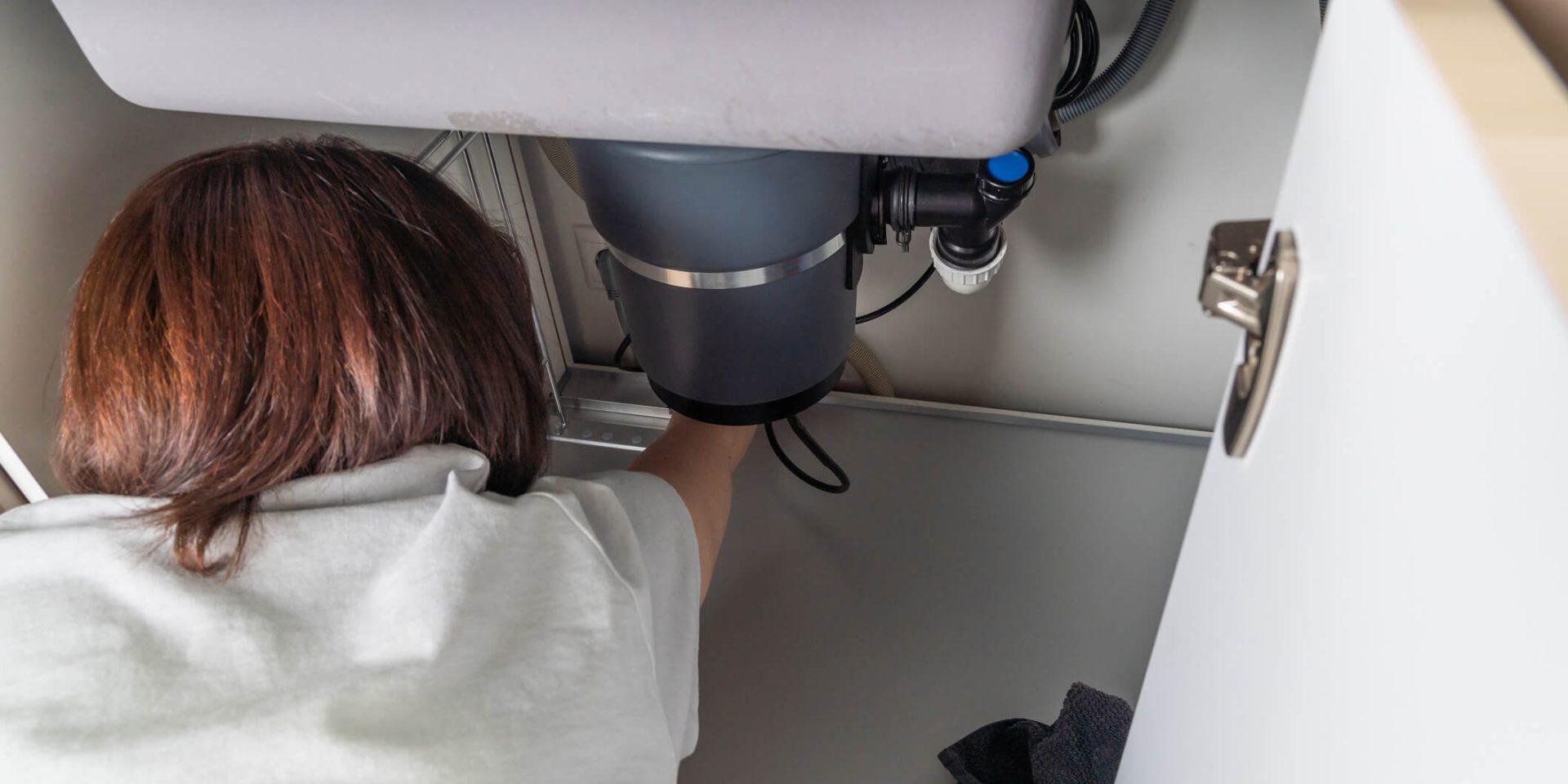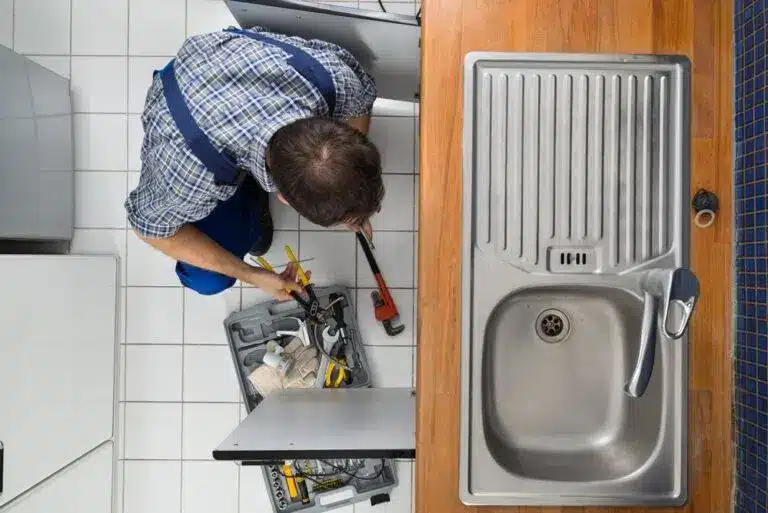Rapid Fixes for a Dripping Garbage Disposal
Rapid Fixes for a Dripping Garbage Disposal
Blog Article
We have unearthed the article on How to fix a pretty consistent leak from my garbage disposal listed below on the web and figured it made sense to talk about it with you over here.

Waste disposal unit are important kitchen area appliances that help in getting rid of food waste effectively. Nonetheless, a dripping waste disposal unit can be an irritating and unpleasant problem to deal with. Fortunately, numerous leakages can be repaired conveniently with a couple of straightforward actions. In this post, we will discuss exactly how to fix a dripping garbage disposal efficiently.
Introduction
Garbage disposals are installed under kitchen sinks and are designed to shred food waste into smaller sized pieces, permitting it to go through the plumbing system quickly. While these gadgets are generally reputable, leakages can take place over time because of wear and tear, loose links, or damage to the device.
Typical Reasons For Leaks in Garbage Disposals
Worn Seals and Gaskets
Seals and gaskets play a critical function in stopping water from dripping out of the waste disposal unit. With time, these components can deteriorate, resulting in leakages around the disposal system.
Loose Connections
The connections in between the waste disposal unit and the pipes system can become loose over time, creating water to leak out throughout procedure.
Fractures or Holes in the Disposal System
Physical damages to the garbage disposal, such as splits or openings in the housing, can additionally lead to leaks.
Recognizing the Resource of the Leak
Before trying to fix a leaking garbage disposal, it is vital to recognize the source of the leak. This can usually be done through visual inspection or by conducting simple examinations.
Visual Examination
Evaluate the waste disposal unit system thoroughly for any indicators of water leak. Pay attention to areas around seals, gaskets, and link factors.
Testing for Leakages
One method to evaluate for leaks is by running water via the disposal system and looking for any visible signs of leak.
Tools and Materials Needed for Fixing a Leaking Garbage Disposal
Before beginning the repair process, collect the needed devices and materials, including a screwdriver, flexible wrench, plumbing technician's putty, replacement seals or gaskets, and epoxy or patching product for repairing splits or openings.
Step-by-Step Guide to Repairing a Dripping Waste Disposal Unit
Switch off the Power
Prior to trying any kind of repairs, make sure that the power to the garbage disposal device is turned off to stop the risk of electrical shock.
Find the Leakage
Determine the specific location of the leakage and figure out the reason.
Tighten up Links
Make use of a wrench to tighten up any kind of loosened links in between the disposal system and the pipes system.
Change Seals or Gaskets
If the leakage is because of worn seals or gaskets, remove the old parts and replace them with new ones.
Patching Fractures or Holes
For fractures or openings in the disposal unit, use epoxy or an appropriate patching product to secure the broken location.
Examining the Garbage Disposal After Repair Work
When the repair service is full, test the garbage disposal by running water through it to ensure that the leakage has actually been resolved.
Preventive Maintenance Tips to Prevent Future Leakages
To prevent future leakages, it is vital to execute routine maintenance on your waste disposal unit. This includes maintaining it tidy, avoiding placing non-food things or tough things down the disposal, and occasionally checking for leaks or various other issues.
Conclusion
In conclusion, repairing a leaking waste disposal unit is a fairly straightforward procedure that can be finished with basic devices and products. By following the actions outlined in this post and practicing preventative upkeep, you can keep your garbage disposal in good working condition and prevent costly repair work in the future.
HERE’S HOW TO FIX YOUR GARBAGE DISPOSAL
WHAT TO DO IF SOMETHING IS STUCK IN YOUR GARBAGE DISPOSAL
If the impeller won’t turn, there’s probably something stuck in the disposal. It could be a steak bone or peach pit, although plumbers report pulling all sorts of inappropriate objects out of disposals, such as bottle caps or aluminum foil. Make sure power to the disposal is off, and look inside to see if you can see the source of the jam.
Never stick your fingers in a disposal. Pull out anything you see with tongs or pliers.
If the disposal still won’t work, it may be time to call a plumber or consider buying a new disposal. GEM Plumbing & Heating is here for all of your garbage disposal needs.
WHAT TO DO IF YOUR GARBAGE DISPOSAL DRAIN IS CLOGGED
Take everything out from underneath your sink and put a bucket or other container under your disposal to catch any water that drains out. Disconnect your disposal from the power supply. If it’s plugged into a wall outlet, unplug it. If it’s hardwired into an electrical box, go to the electrical panel and turn off the breaker for the disposal. Pour ¼ cup of baking soda into the drain, followed by ½ cup of white vinegar. Give the solution a few minutes to fizz and do its work. Look into the disposal with a flashlight to see if you can see an object that might be causing the clog. If you see it, remove it using tongs or pliers. MORE TIPS ON DEALING WITH A CLOGGED GARBAGE DISPOSAL
Never use drain cleaner in a garbage disposal. It can damage the plastic parts inside the disposal. You can also be splashed with the caustic liquid while working to clear the clog. Beware! Never stick your fingers into a garbage disposal. Trust us — not a good idea. In many instances, your dishwasher drains through your garbage disposal. This allows the disposal to grind any large food particles that may be drained out of your dishwasher. There are some jurisdictions, however, where the plumbing code prohibits such a connection. WHAT TO DO WHEN YOUR DISHWASHER DRAINS THROUGH THE DISPOSAL
Run some water in the sink so your plunger has at least a ½-inch of water to create a seal and plunge vigorously up and down several times. You may need to repeat this several times. Run hot water down the drain to clear any residue that remains.

As an enthusiastic reader about Why Is , I was thinking sharing that excerpt was valuable. Sharing is caring. Helping people is fun. Thanks a lot for your time. Visit us again soon.
Schedule Report this page